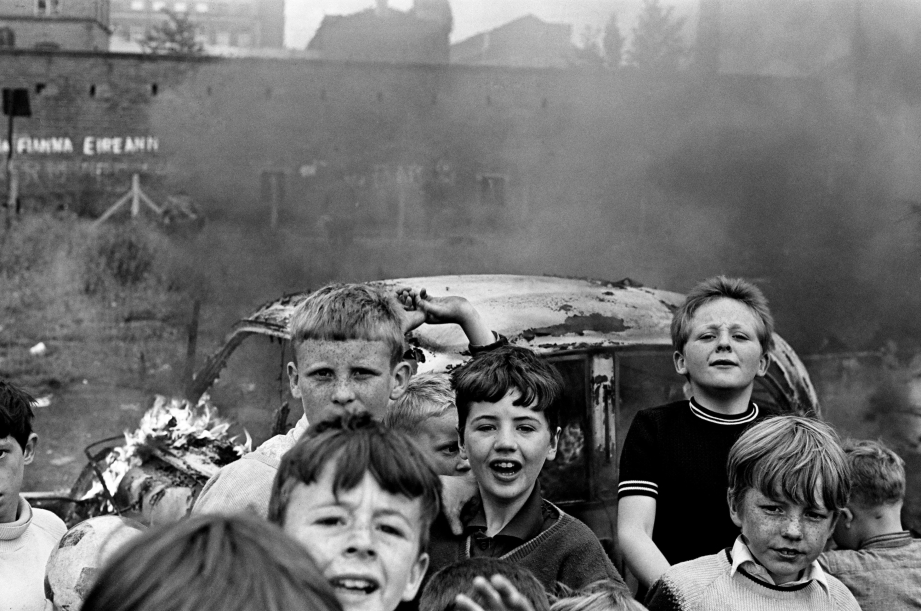

Boys with burning car in an abandoned soccer field between the Republican stronghold Ardoyne and Bone areas in Belfast, August.
Virtually every athletic field in areas of Belfast patrolled by paramilitary groups had been turned into a dumping ground like this one where children of all ages played amidst abandoned vehicles and trash.
Belfast 1972
John Day | Northern Ireland
Photographer: John Day
Exhibit Title: Belfast 1972
Location: Northern Ireland
These pictures were taken during a three-month reporting trip in the summer of 1972 to Belfast, Northern Ireland, working for the Philadelphia Bulletin, Ramparts Magazine, and the Harvard Crimson. Bloody Friday had occurred in Derry on January 30th of that year and the British Army was doubling down in its efforts to wipe out the Irish Republican Army. 1972 was the most violent year of what is generally known as “The Troubles.”
My initial goal was to write a political and economic analysis of the conflict but that quickly struck me as a nearly impossible three-month task; what was much more compelling was how the average Belfast resident carried on in the face of extraordinary violence, fear, and uncertainty. I ended up living with various families in the Catholic Ardoyne and Bone sections of Belfast as well as spending lots of time in the Protestant Shankill Road neighborhood, what we would call today being "embedded."
Taking pictures seemed to be the best way to get to the heart of what was happening in Belfast.
I took these pictures in Belfast, Northern Ireland during the summer of 1972.
I went with a friend with similar interests, Richard Dunne, armed with press passes from the Bulletin and Ramparts Magazine, with a promise to send back regular stories to the Bulletin and Crimson, and a longer piece to Ramparts.
In addition to my typewriter, I brought a used Leica M2R and several bulk rolls of Tri-X film. I ended up living with a couple of families in a Catholic neighborhood known as the Bone, in the Ardoyne section of Belfast, where I took lots of pictures.
I had idolized the Vietnam press corps and those covering civil rights in the U.S. In Belfast, there was the “war,” there was the atmosphere (“Whatever you say, say nothing.”), and there were the people. That was the tension in what and how to photograph. To me, most worthy of attention was the incredible will of the people to just live their lives. The residents of the Bone had very little but lived with grace, strength, and a tremendous generosity that I benefited from daily.
On July 21st (“Bloody Friday”), Richard and I were three blocks from the Oxford St. bus station when a car bomb went off killing six people. I photographed the horror but was surprised by the press corps’ system of sending just a few people out from the Europa Hotel for something of this magnitude. Subsequently, while working on a story about surgeons treating the bomb victims at the Royal Victoria Hospital, I decided that being a doctor might offer a more direct means of making a positive impact in the world.
The result was that I spent forty years in medicine, only dreaming of someday printing up my pictures and going back there. I haven’t gone back yet but these are some of my pictures. Richard, who became a lawyer, never got the chance to print his up, having died in a plane crash on Cape Cod Thanksgiving morning 1997. This work is in his memory.
Make Comment/View Comments